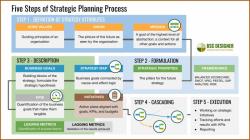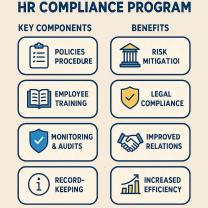How to write a perfect business proposal?
Crafting a perfect business proposal involves a combination of clear communication, addressing the client's needs, and showcasing your expertise. Here are steps to create a compelling business proposal:
1. Understand the Client's Needs
- Research: Gather information about the client, their business, and their specific requirements.
- Identify Pain Points: Understand the challenges they face and how your proposal can offer solutions.
2. Structure Your Proposal
- Cover Letter: Introduce yourself and summarize the proposal's purpose and key points.
- Title Page: Include a clear title, your company's name, the client's name, and the proposal's date.
- Table of Contents: If the proposal is lengthy, include a table of contents for easy navigation.
3. Executive Summary
- Summarize the Proposal: Briefly outline the project, objectives, and benefits.
- Highlight Unique Selling Points: Clearly state how your solution stands out.
4. Project Details
- Outline Scope: Define the project scope, objectives, deliverables, and timeline.
- Methodology or Approach: Explain how you plan to address the client's needs or challenges.
- Budget and Pricing: Detail costs, pricing structures, and payment terms clearly and transparently.
5. Company Overview and Expertise
- Present Your Company: Highlight your company's strengths, relevant experience, and success stories.
- Team Expertise: Showcase the team members who will work on the project and their qualifications.
6. Testimonials or Case Studies
- Include Social Proof: Incorporate client testimonials or case studies to demonstrate successful past projects.
7. Address Concerns and Risks
- Risk Assessment: Acknowledge potential risks and outline contingency plans.
- Address Concerns: Anticipate questions or objections and provide answers preemptively.
8. Call to Action
- Clear Next Steps: Specify what action you want the client to take after reviewing the proposal.
- Contact Information: Provide multiple ways for the client to reach you for further discussion.
9. Proofread and Review
- Editing: Ensure the proposal is free from errors, typos, and inconsistencies.
- Consistency: Maintain a consistent tone and formatting throughout the document.
10. Personalize and Customize
- Tailor to the Client: Customize the proposal to address the client's specific needs and preferences.
- Use Visuals: Incorporate graphs, charts, or visuals to enhance understanding and engagement.
11. Follow-Up
- Timely Follow-Up: Reach out to the client after sending the proposal to discuss any questions or concerns they might have.
Crafting a perfect business proposal requires a blend of professionalism, clarity, and personalization to effectively communicate your value proposition and meet the client's needs.
What are the key elements of an exceptional business proposal?
An exceptional business proposal is a persuasive document that effectively communicates your value proposition and convinces the reader to choose you over competitors. Here are the key elements that contribute to its effectiveness:
1. Executive Summary:
- Briefly summarize the key points of your proposal, including your proposed solution, the problem you address, and the benefits you offer.
- Capture the reader's attention and convince them to read further.
2. Problem Statement:
- Clearly define the problem you are addressing and its impact on the target audience.
- Demonstrate a deep understanding of the problem and its consequences.
3. Proposed Solution:
- Outline your proposed solution in detail, including its features, benefits, and functionalities.
- Explain how your solution addresses the problem and provides value to the reader.
4. Qualifications and Experience:
- Highlight your qualifications and experience relevant to the proposed solution.
- Demonstrate your expertise and ability to successfully deliver on your promises.
5. Methodology and Timeline:
- Explain your approach to implementing the solution and the timeline for completion.
- Provide a clear and realistic project plan that instills confidence in your execution capabilities.
6. Cost and Budget:
- Clearly outline the costs associated with your solution, including any fees, services, and materials.
- Provide a detailed budget breakdown and explain any cost assumptions made.
7. Benefits and Value Proposition:
- Quantify the benefits of your solution and demonstrate how it will provide significant value to the reader.
- Focus on the return on investment (ROI) and other measurable outcomes.
8. Call to Action:
- Clearly state what you want the reader to do after reading your proposal.
- Provide a strong and specific call to action that motivates the reader to take the next step.
9. Professional Presentation:
- Ensure your proposal is well-organized, formatted professionally, and free from errors.
- Use high-quality visuals, diagrams, and charts to enhance the clarity and impact of your message.
10. Tailoring and Personalization:
- Tailor your proposal to the specific needs and requirements of the target audience.
- Address their pain points, concerns, and priorities directly.
Bonus: Differentiation and Uniqueness:
- Clearly articulate what sets your solution apart from competitors.
- Highlight your unique value proposition and competitive advantages.
By incorporating these key elements and paying close attention to detail, you can create an exceptional business proposal that increases your chances of success and secures the deal.













